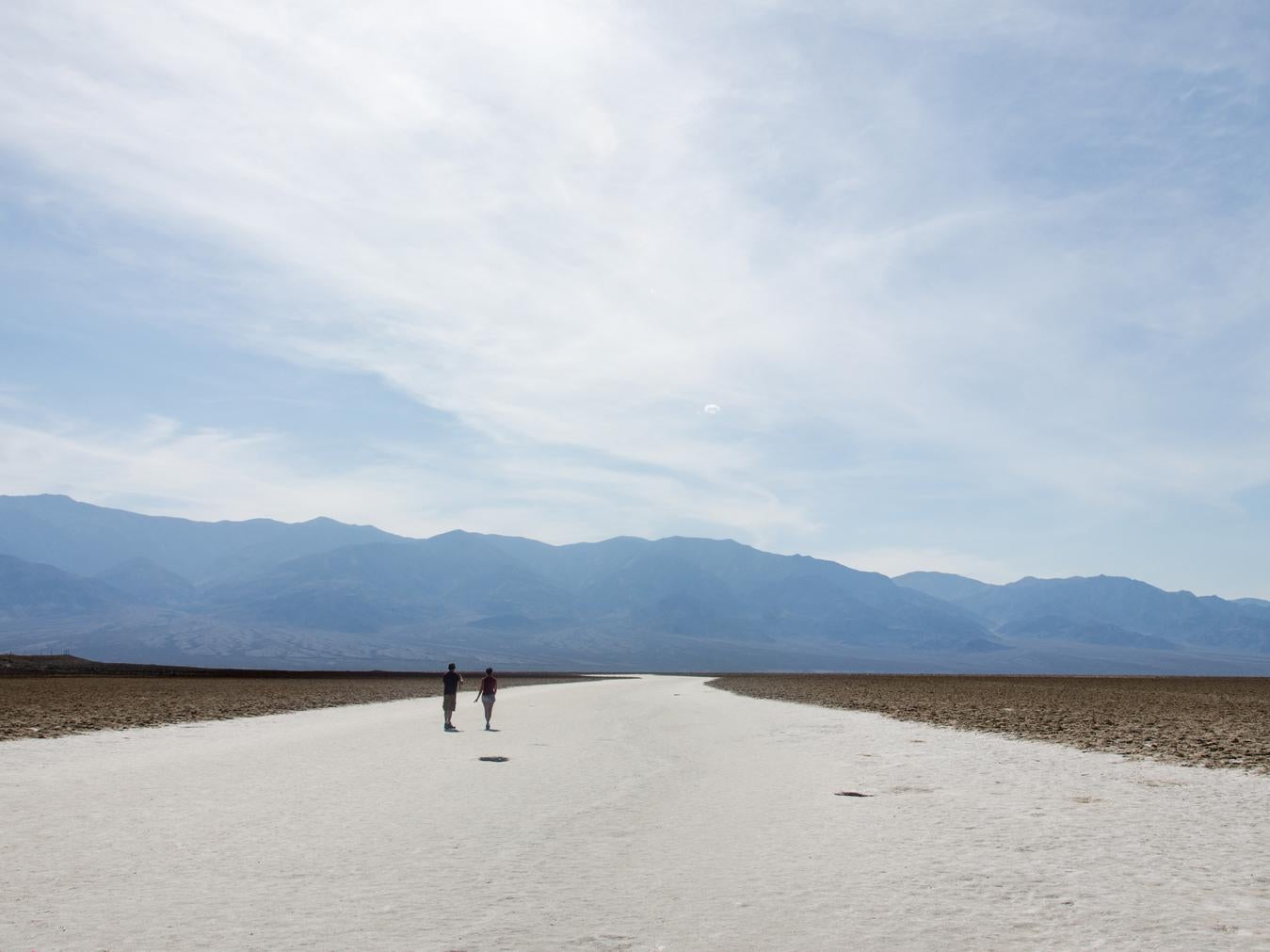Death Valley sets record for hottest month ever recorded on Earth
'It eclipsed the record by quite a bit'

Your support helps us to tell the story
From reproductive rights to climate change to Big Tech, The Independent is on the ground when the story is developing. Whether it's investigating the financials of Elon Musk's pro-Trump PAC or producing our latest documentary, 'The A Word', which shines a light on the American women fighting for reproductive rights, we know how important it is to parse out the facts from the messaging.
At such a critical moment in US history, we need reporters on the ground. Your donation allows us to keep sending journalists to speak to both sides of the story.
The Independent is trusted by Americans across the entire political spectrum. And unlike many other quality news outlets, we choose not to lock Americans out of our reporting and analysis with paywalls. We believe quality journalism should be available to everyone, paid for by those who can afford it.
Your support makes all the difference.California's Death Valley has smashed its own record for the hottest month ever recorded anywhere.
Preliminary results suggest the month's average temperature was 108.1F (42.28C).
This edges out the previous record, set in the valley at the same time last year, when the average was 107.4F (41.89C).
"It eclipsed the record by quite a bit," said Todd Lericos, a meteorologist who leads the Las Vegas National Weather Service, noting the new average will need to be reviewed before entering official record books.
The temperatures are measured at Furnace Creek in Death Valley National Park, a desert in south eastern California that includes Badwater Basin – the lowest point in North America.
The location also holds the world record for highest temperature ever recorded – 134F (56.67C) – set on July 10, 1913.
The valley got its morbid name from a group of pioneers who got lost there in 1849-1850 and thought it would be the end, according to the National Park Service. Only one died, however, before they found their way out.
Summer heat is so routinely extreme that tourists are warned to drink at least 4 litres of water each day, carry additional water in their cars, stay close to their vehicles and watch themselves and others for dizziness, nausea and other symptoms of potentially deadly heat illness.
Visitors are urged to "travel prepared to survive," avoid hiking at low elevations and return to their air-conditioned cars for a cool-down after just 10 to 15 minutes of exposure outdoors. Amid the heat, thunderstorms bring the threat of flash floods.
Even with that history, July was exceptional as a weather pattern stoked high temperatures.
A very persistent high-pressure system set up over the Southwest, restricting the movement of air vertically in the atmosphere and creating a heat wave.
"It was fairly intense for this time of year," said Mr Lericos.
Among the extreme conditions were four consecutive days reaching a high of 127F (52.7C) and overnight lows that remained over the century mark.
The records came as heatwaves scorched large areas of the planet, with deadly temperatures and wildfires striking the US from California to New York in July.
Record temperatures were recorded across much of the northern hemisphere, with the heat above the Arctic Circle described as “unprecedented”.
Many scientists warned that heatwaves of a similar scale and worse are likely to become more frequent in the future as the planet gets warmer.
Preliminary work by the World Weather Attribution network concluded the European heatwave was made more than twice as likely by climate change.
The researchers behind this analysis warned that the spiralling temperatures being recorded across the world should prompt leaders to take urgent action, both adapting to global warming and ensuring it does not get any worse.
Additional reporting by AP.
Join our commenting forum
Join thought-provoking conversations, follow other Independent readers and see their replies
Comments